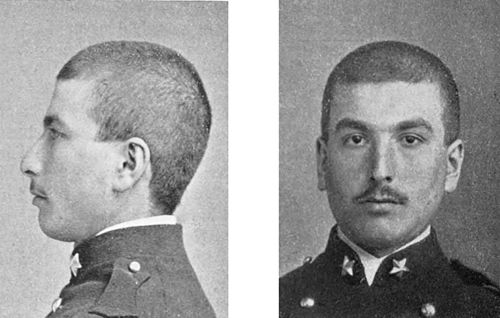to the customs of cremation which were in vogue; such as have been studied are of all types.[1] It appears, from the few that have been measured, that a long-headed (Greek?) element was rather predominant; and, as we have already observed, Lombroso and others are inclined to regard the peculiarly dolichocephalic people

Mixed Type. Island of Ischia. Cephalic Index, 83·6.
about Lucca as the last remnant of the pure Etruscan. If all Etruria were once like this, it must have changed wonderfully in the historic period, contrary to most of the experience we have related, for to-day this long-headed element is relatively quite scarce. For our own part, we regard the testimony of fifty thousand living peasants, more or less, as more credible than the evidence from a score or two of crania of uncertain origin, even though they be found in Etruscan tombs.
On the whole, we are inclined to the belief that our Etruscan ethnic origins must be sought in the north rather than in the south; in other words, that the Etruscans were an offshoot of our Alpine race of central Europe. Since the earliest times, as Zampa has proved, and it agrees with evidence from all around the Alps, there has been a steady outflow of population from this inhospitable habitat, unable as it is to afford sustenance to an increasing population. This downpour of broad-headed Alpine race types has entirely overcome the valley of the Po. In prehistoric times the people of Lombardy, Veneto, and Emilia were quite similar to the modern peasants in the extreme south. All Italy, in other words, was once Mediterranean in type. This has been proved.
- ↑ The best references on this subject (see author's bibliography) are Zampa, 1891, pp. 48-56; Nicolucci, 1869, and especially 1888, pp. 12-52.
